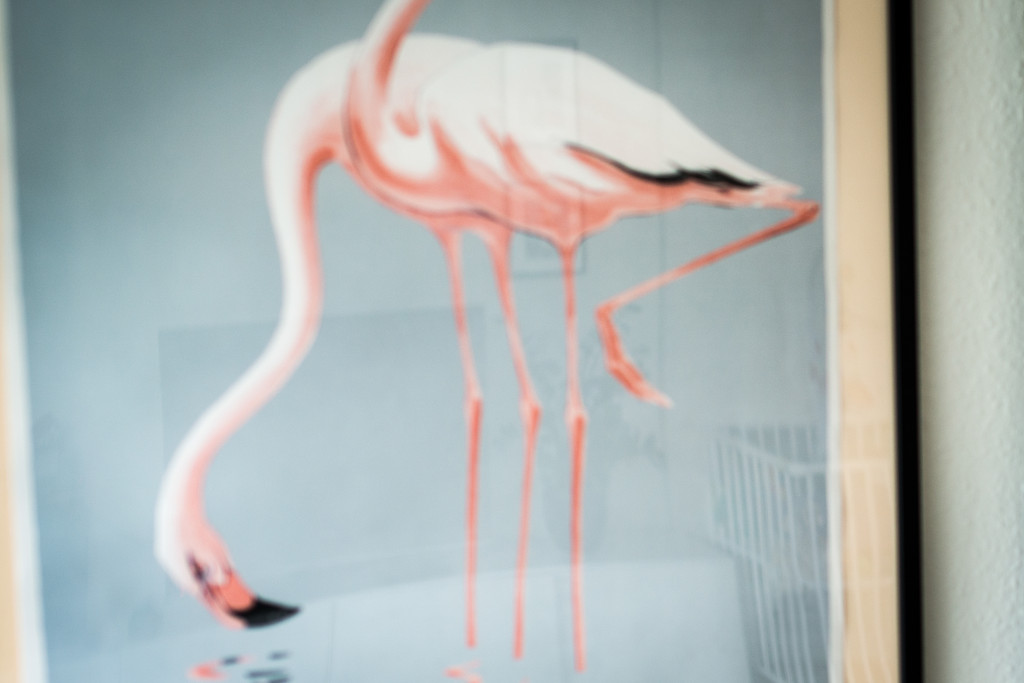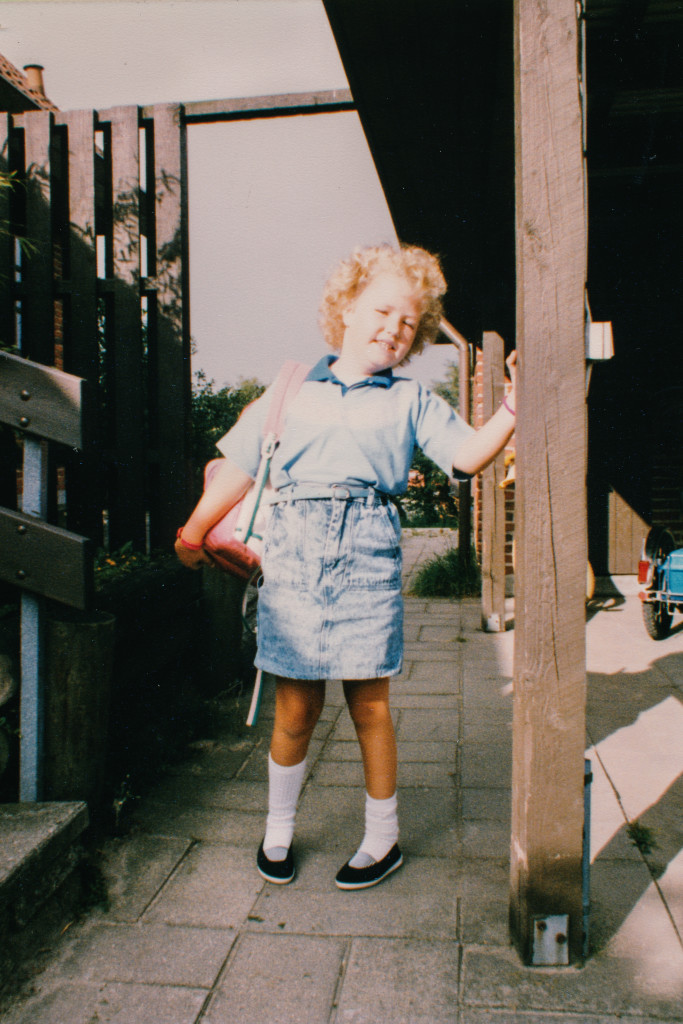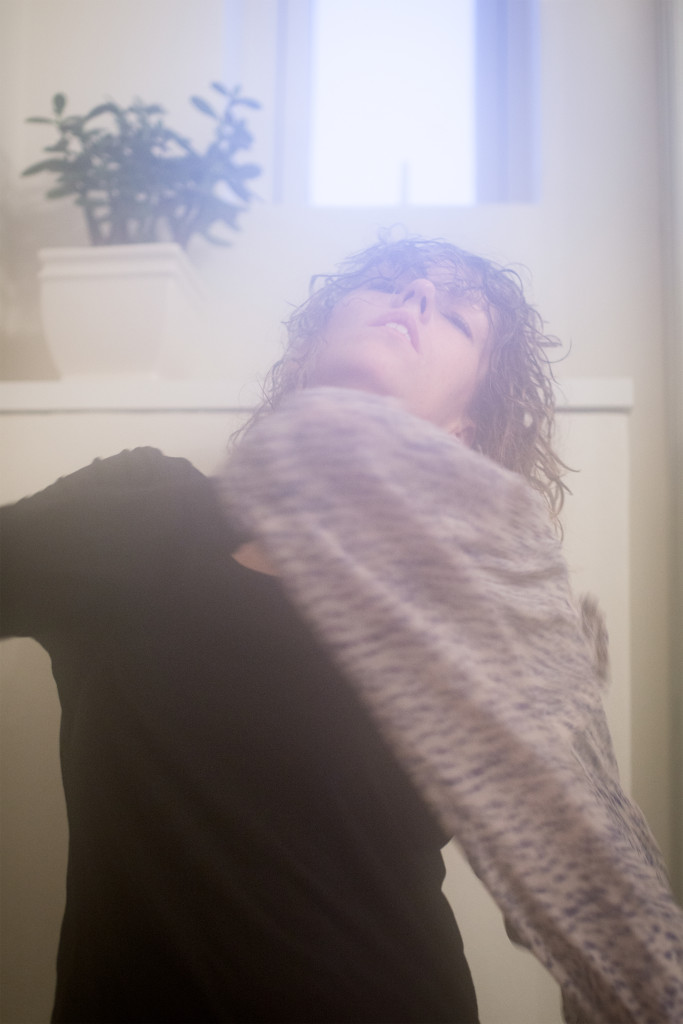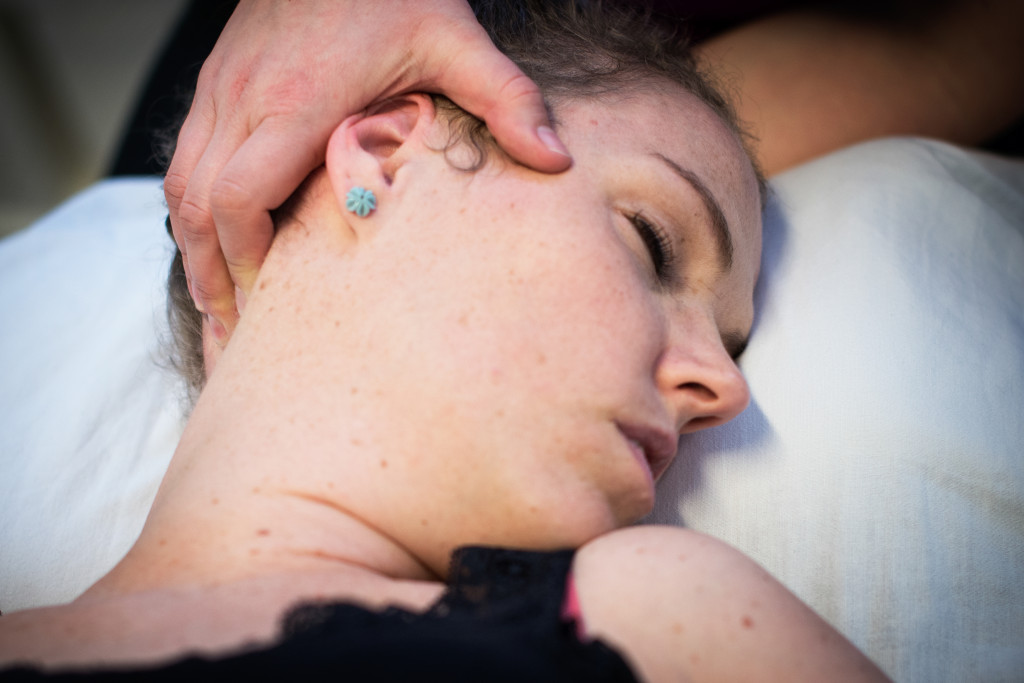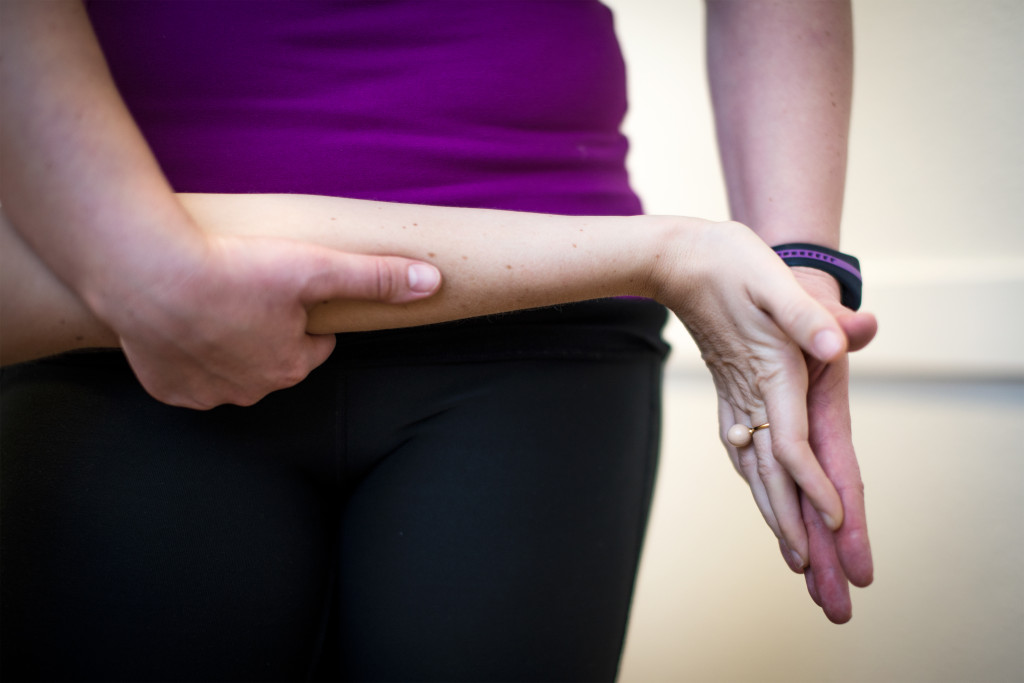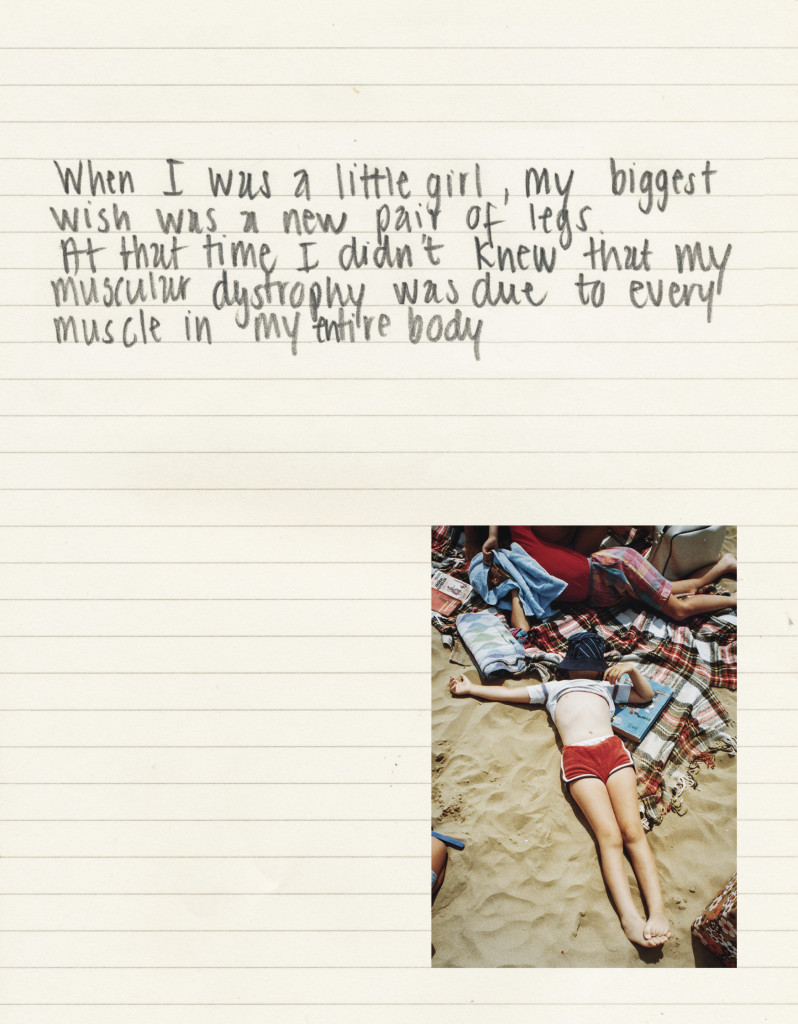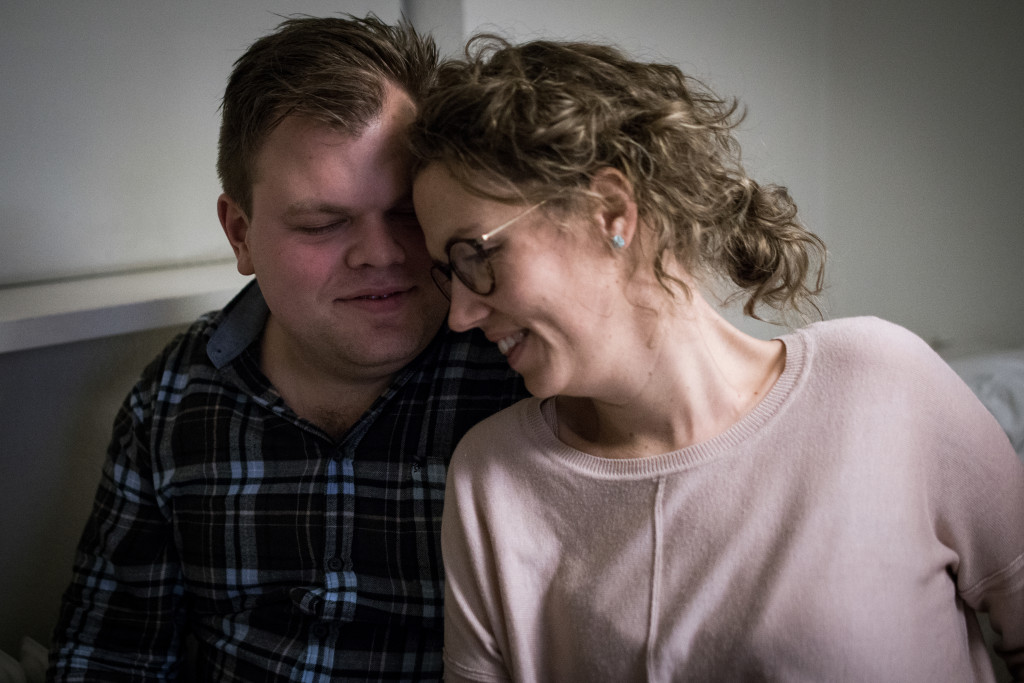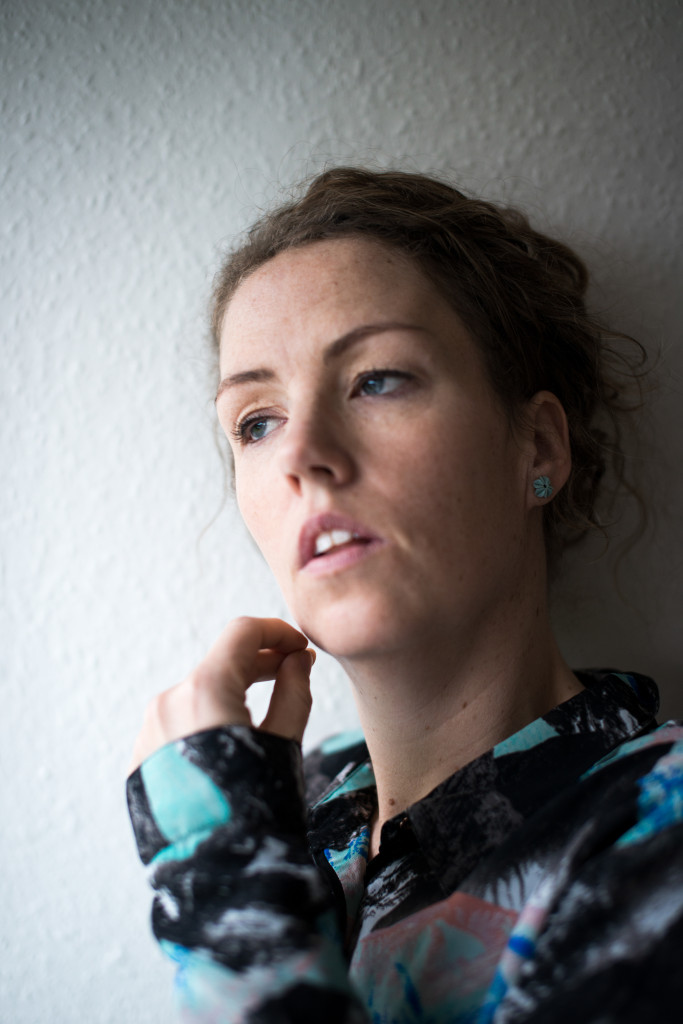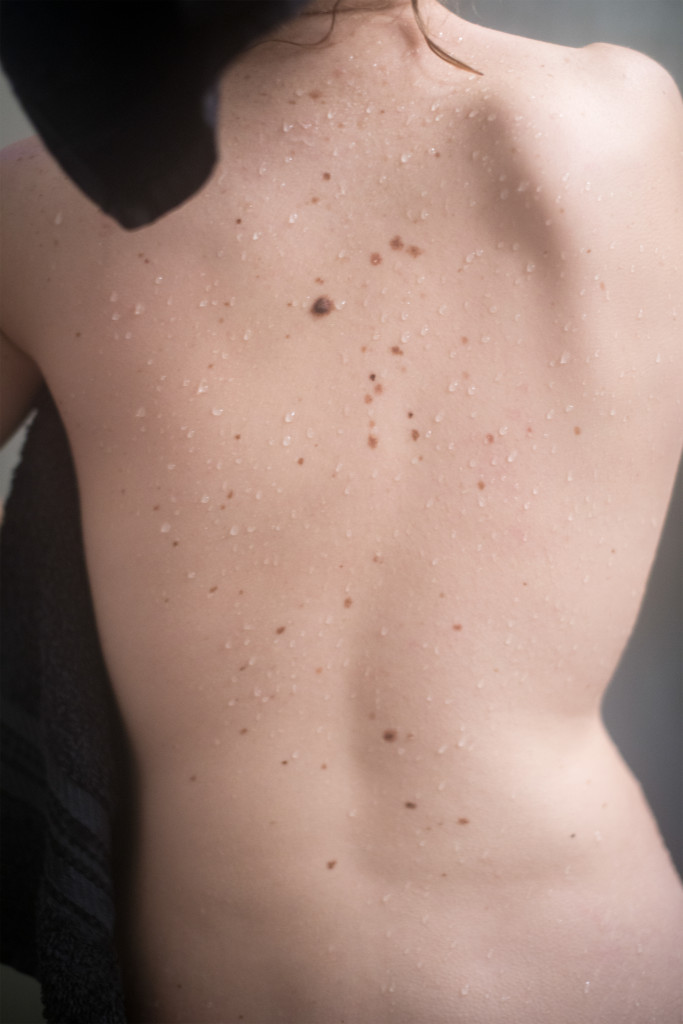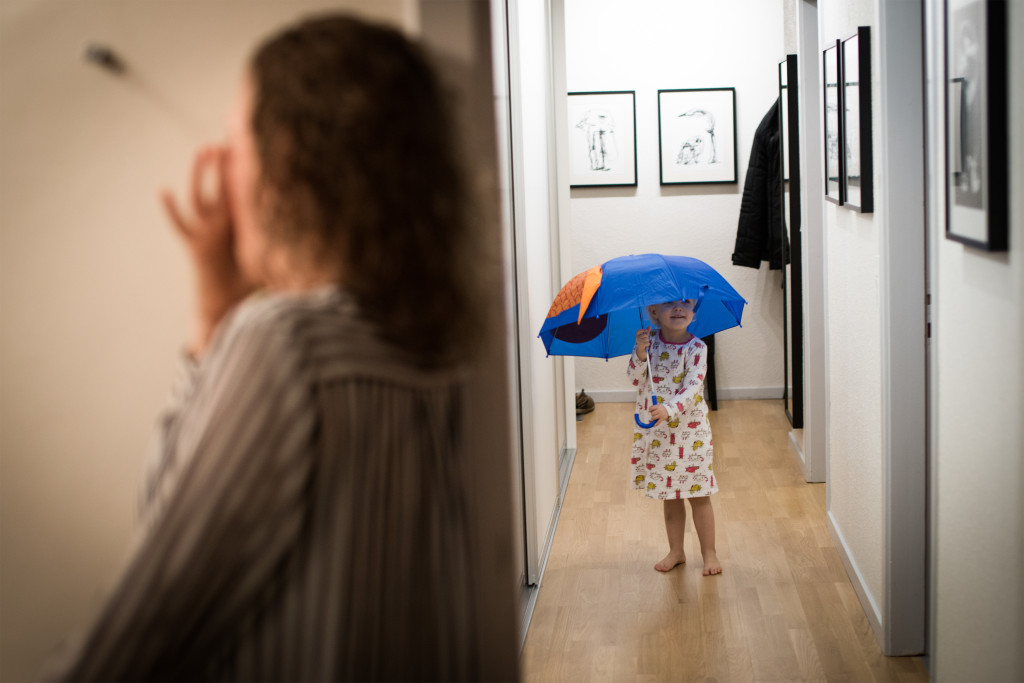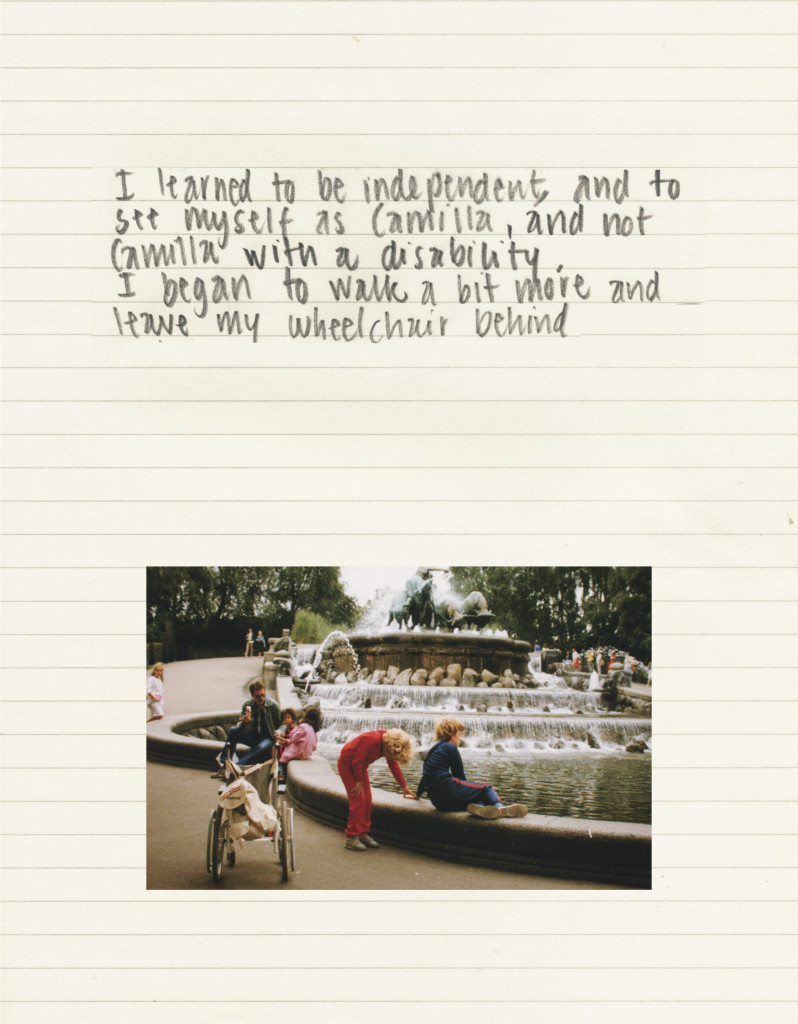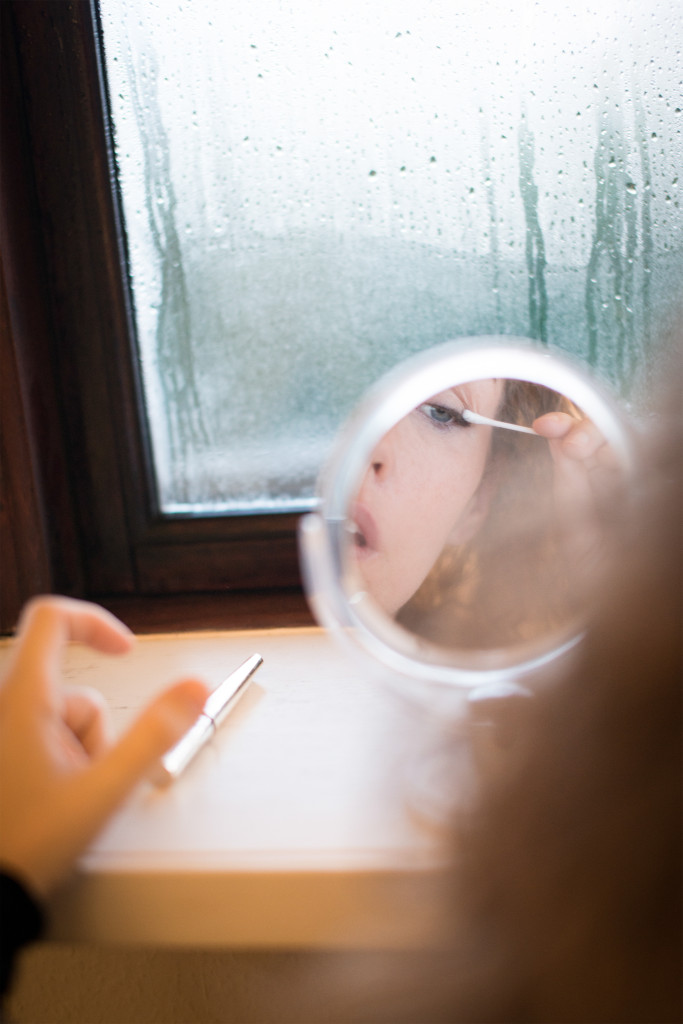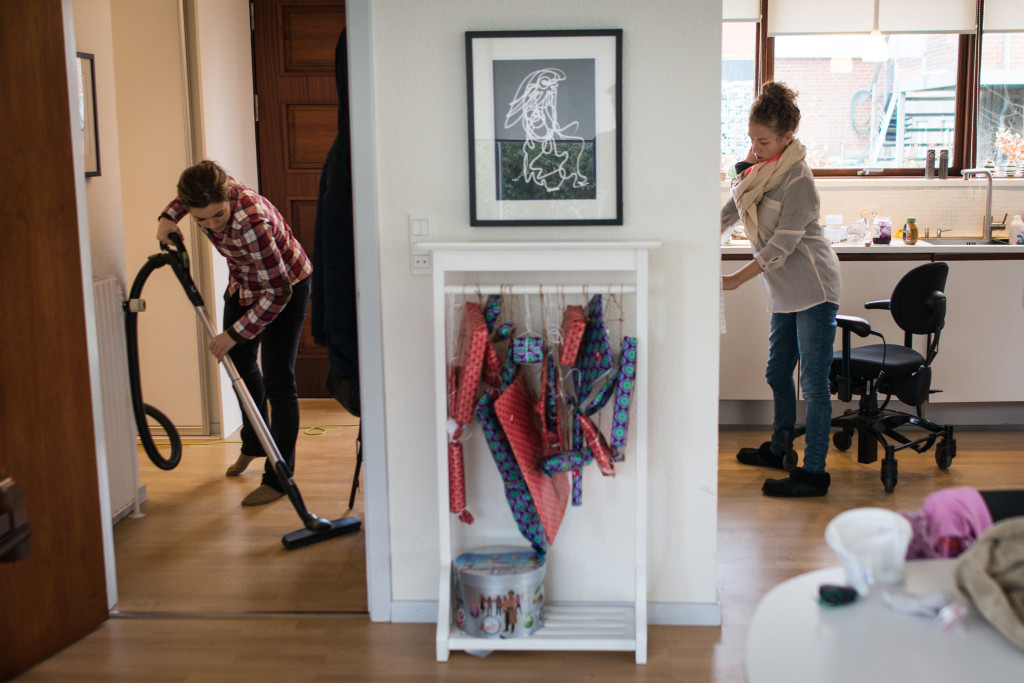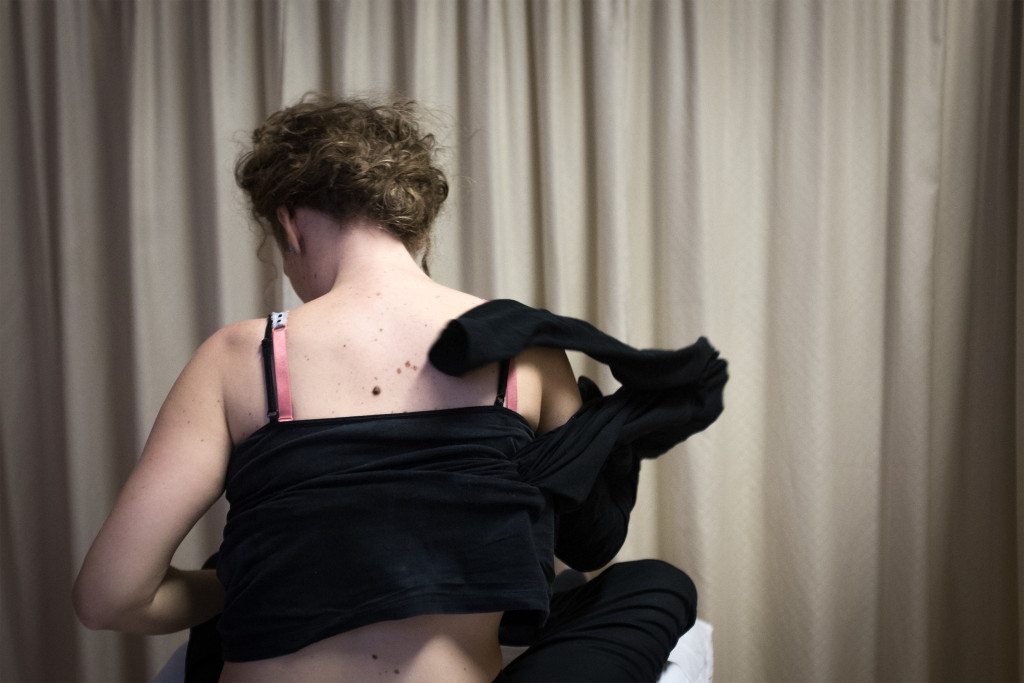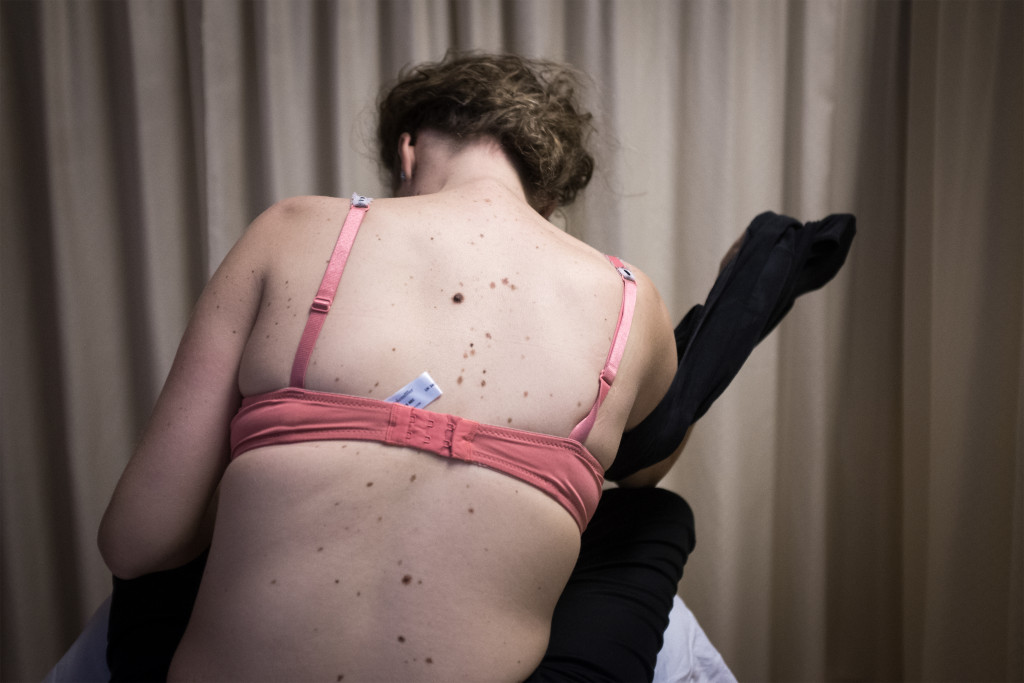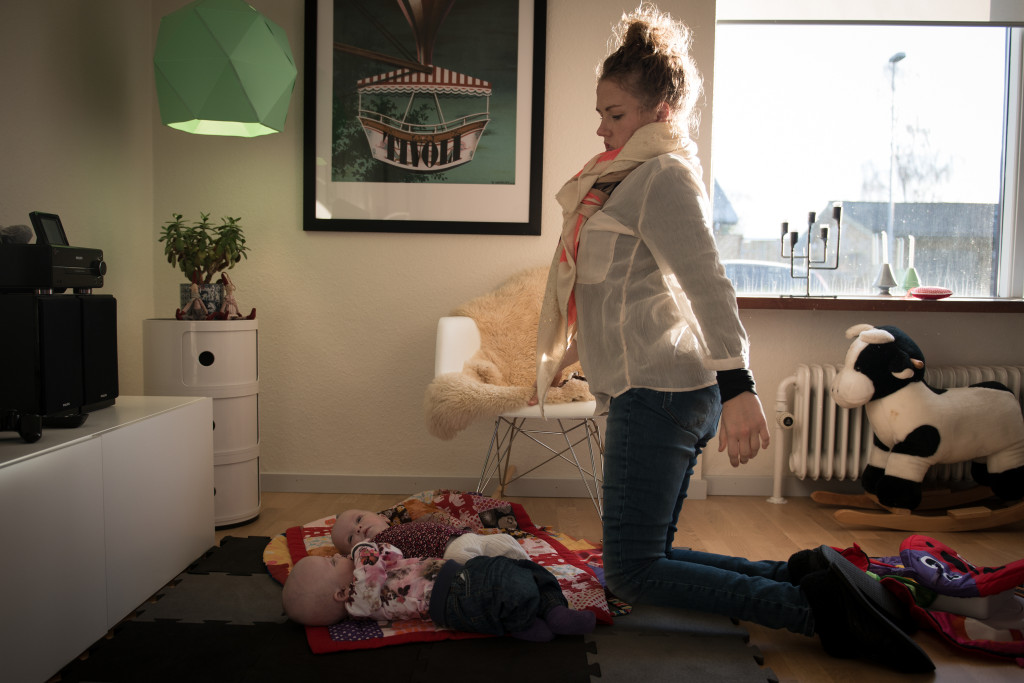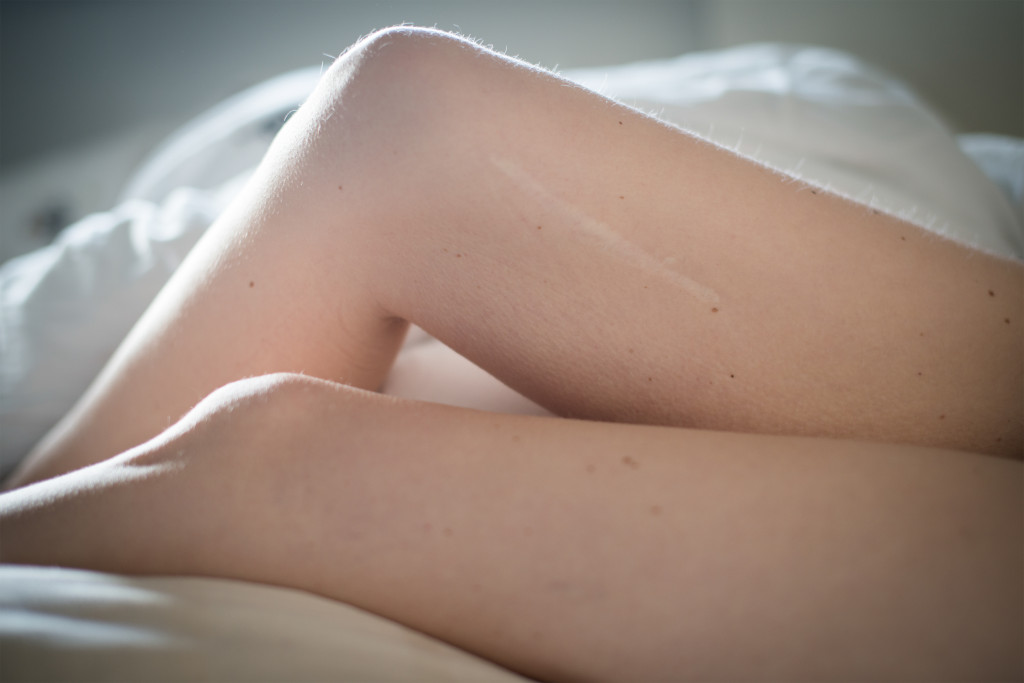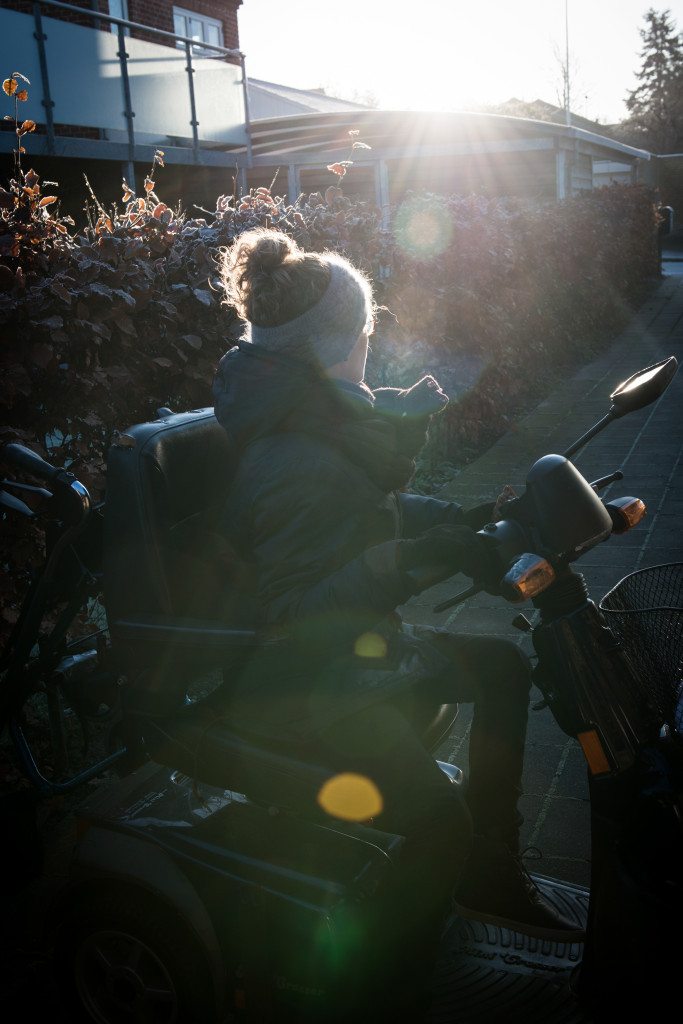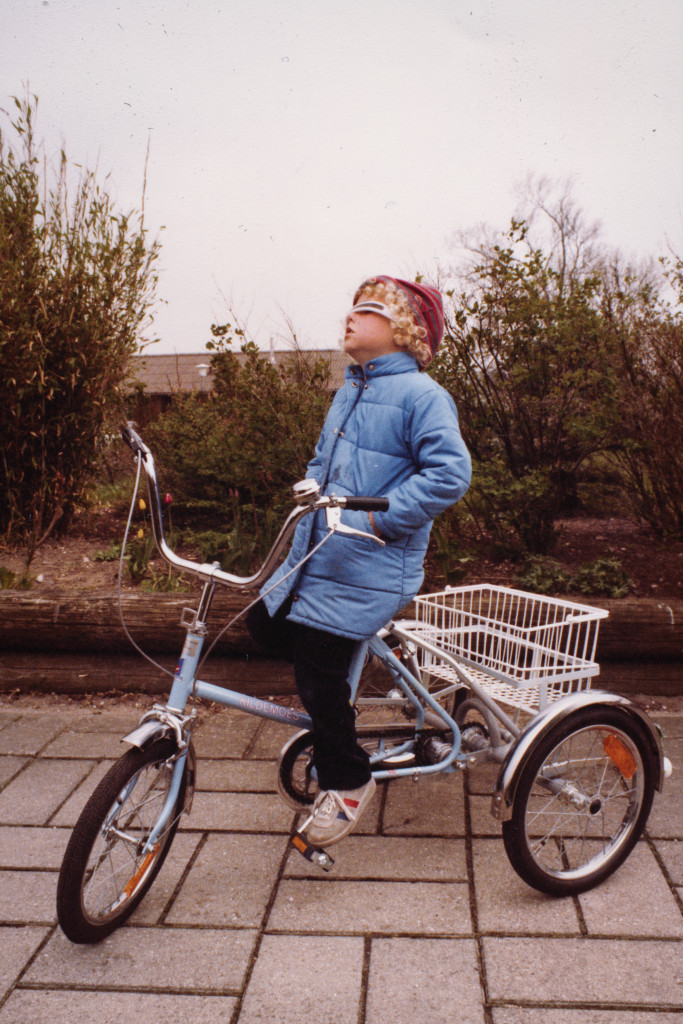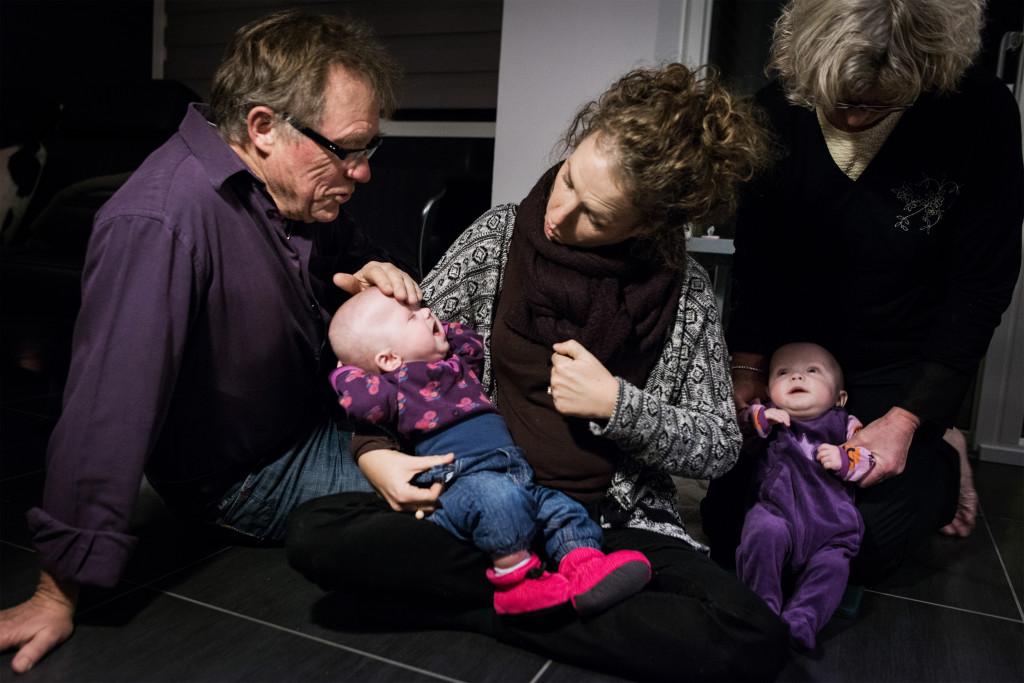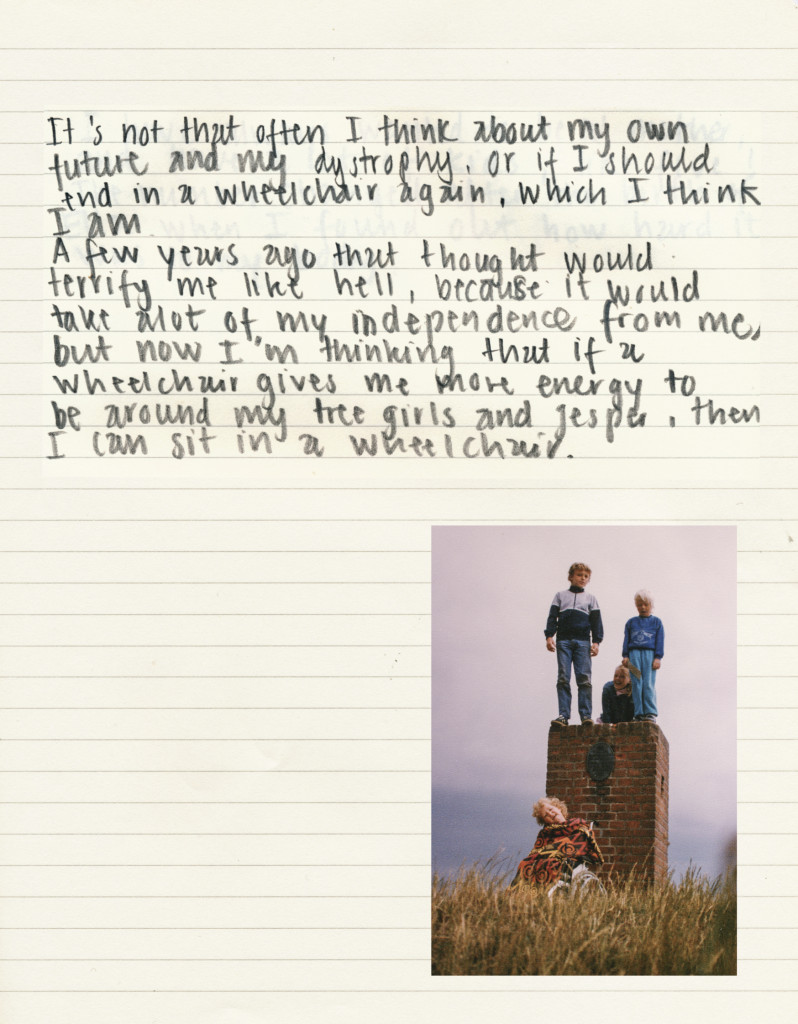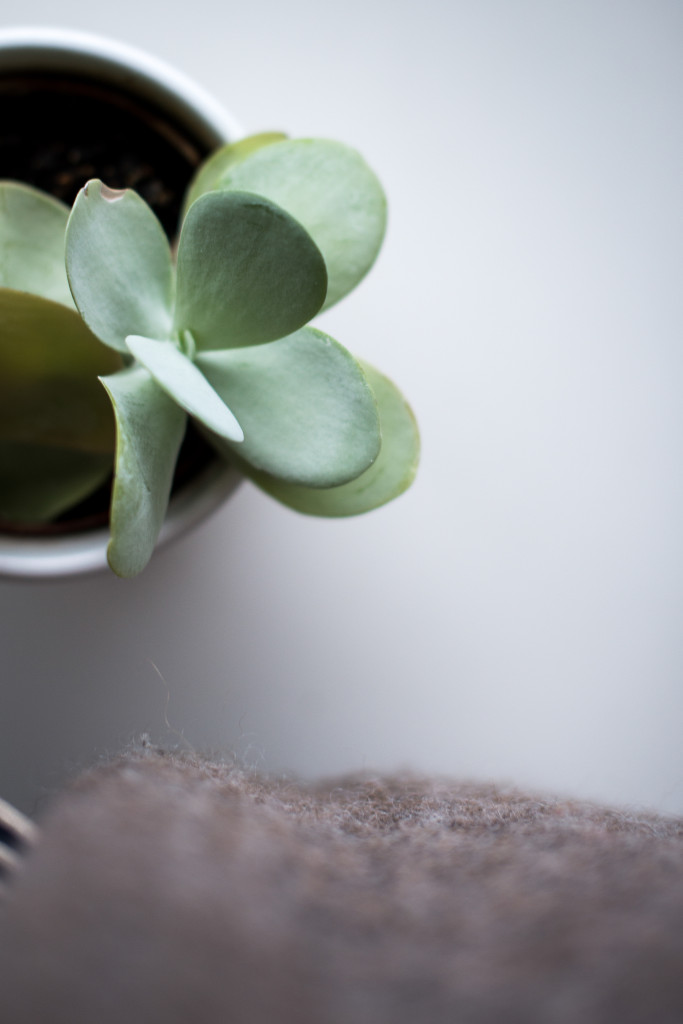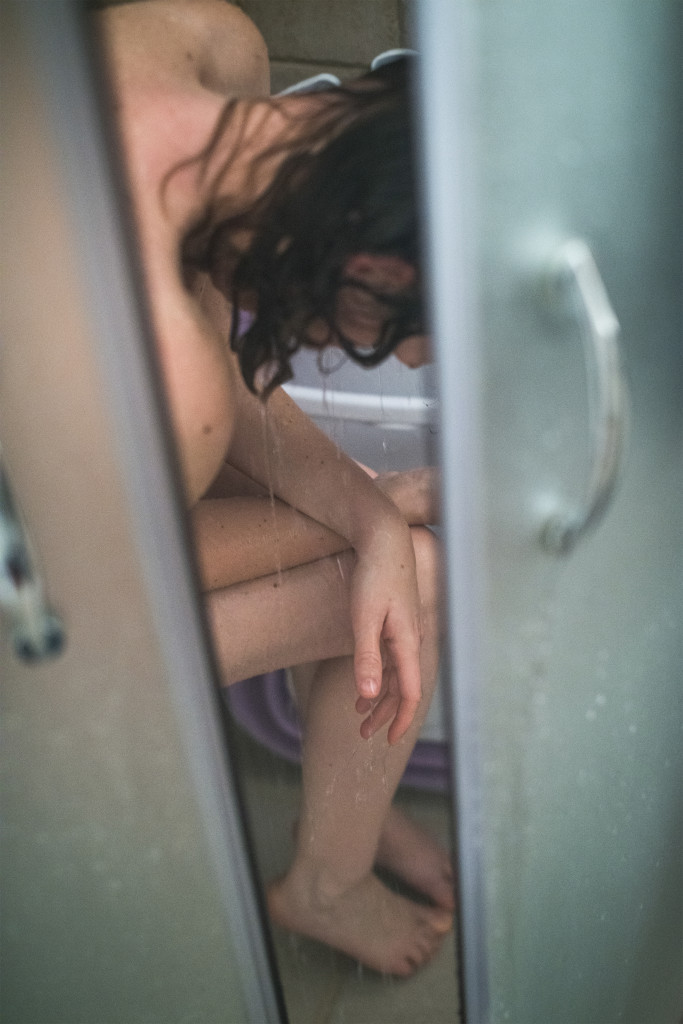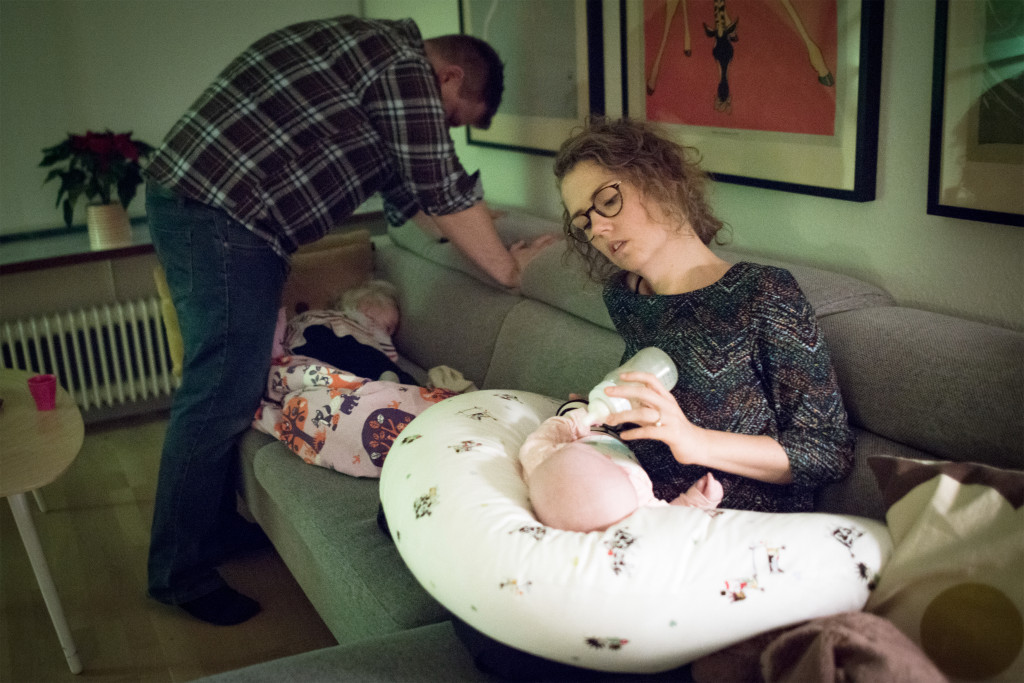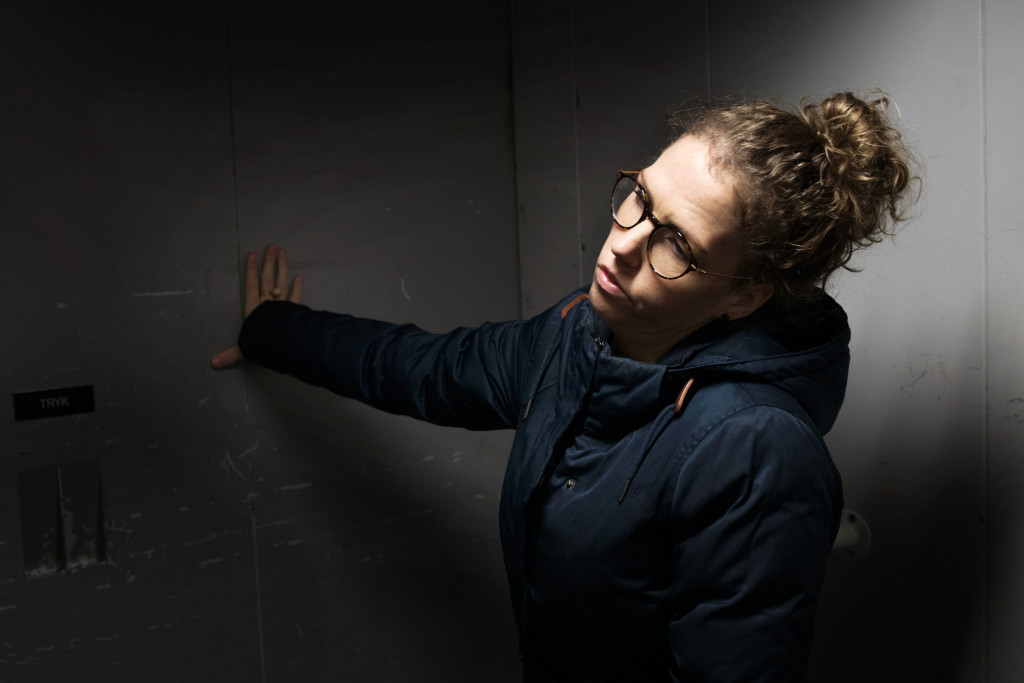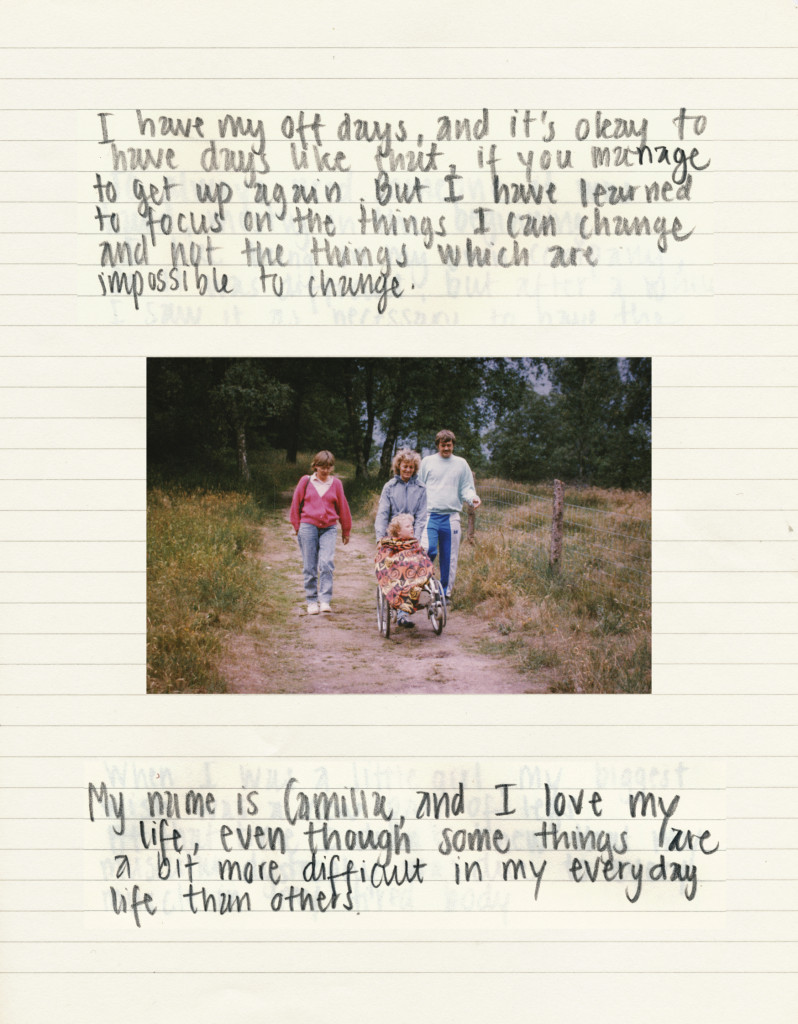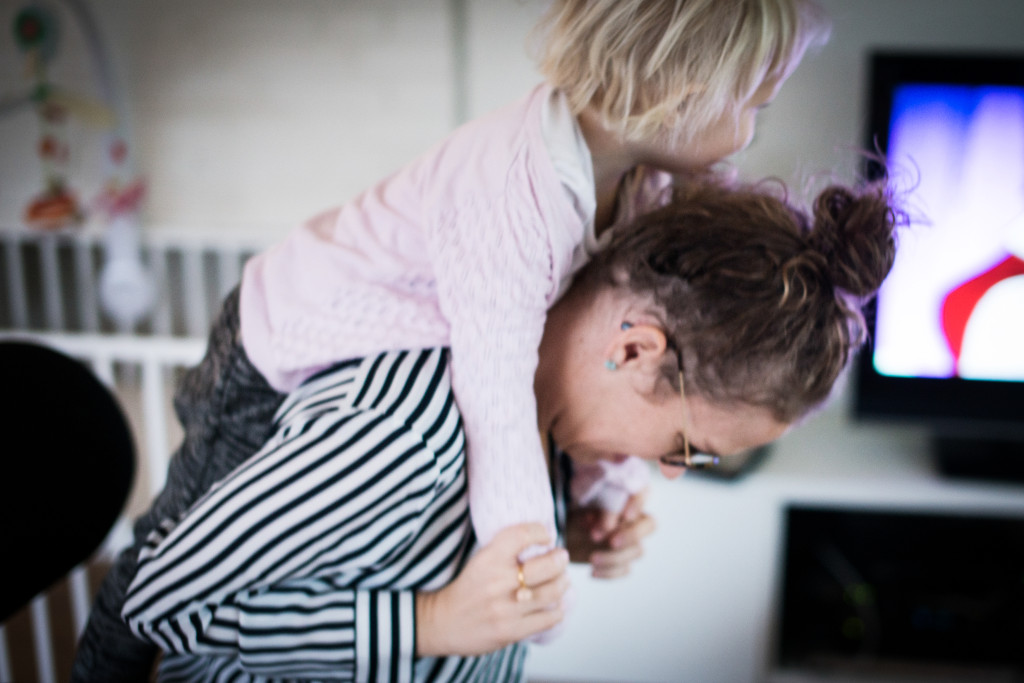A flamingo poster hangs on the wall of Camilla’s house. Randers, Denmark, Jan. 12, 2014.
An old picture of a 6-year-old Camilla on her first day of school. She already discovered she was affected by muscular dystrophy. Three years earlier her parents realized that she couldn ́t walk and run as the other kids. After several examinations and a biopsy of the muscles, the doctors found out that she was affected by muscular dystrophy.
Camilla struggles while getting dressed. Putting dresses on is one of the most difficult things for Camilla to do. She has little strength in her arms, and needs to sit down to dress herself after she showers in the mornings. Randers, Denmark, Sept. 12, 2014.
Camilla attends her weekly session to the psychiatrist. Muscular dystrophy is a common name for a number of neuromuscular diseases in which muscle function is affected. Muscular dystrophies are caused by a genetic mutation. They are characterized by skeletal muscle weakness and the death of muscle cells and tissue.
Camilla attends her weekly session to the psychiatrist. Muscular dystrophy is a common name for a number of neuromuscular diseases in which muscle function is affected. Muscular dystrophies are caused by a genetic mutation. They are characterized by skeletal muscle weakness and the death of muscle cells and tissue. her weekly session to the physiatrist. Muscular dystrophy is a common name for a number of neuromuscular diseases in which muscle function is affected. Muscular dystrophies are caused by a genetic mutation. They are characterized by skeletal muscle weakness and the death of muscle cells and tissue.
Camilla feeds 5-month-old twins Agnes and Esther Granau, who are lying on the table so Camilla doesn't have to support them with her arms. When she and Jesper found out that she was carrying twins, they had serious concerns about how her body would handle it. They took the risk. Randers, Denmark, Jan. 12, 2014.
A page from the diary Camilla keeps about her life. The photo was taken by her father during a summer holiday in Bibbona, Italy. Camilla saw the wheelchair she used during her childhood as her healthy legs, even though she hated it as much as the attention it attracted from people. Her parents were very caring and protective, and tried to explain to her that society was not different for her.
Camilla and Jesper Granau in their home. They met 5 years ago in the city while they were hanging out with friends. Four months later, they bought the house they now live in with their daughters. “When Jesper and I moved in together, we found a 10-year-old diary of mine where I wrote about my concerns of finding a boyfriend who could see me as I am and didn’t worried too much about my handicap,” Camilla says. Randers, Denmark, March 12, 2014.
A portrait of Camilla at home. Randers, Denmark, Nov. 12, 2014.
9/12/2014_a frozen branch of a plant in Camilla’s garden.
Randers, Denmark, 9/12/2014_Camilla while is drying her body after a shower. Her back shows the imbalance of her spine.
Randers, Denmark, 9/12/2014_Ella Granau, 3 years old, is playing at home while Camilla is putting her make up in the bathroom. Since doctors The weekly session is important for Camilla because the exercises and therapy aim to stretch the muscles and release them from the tension, preserve the longer possible patient autonomy and delaying the progress of the disease. of Muscular Dystrophy is a great weakness in the back and legs, which causes difficulty in walking and moving. The main symptom can’t find out the exact type of Camilla’s Muscular Dystrophy, Ella, as the twins, cannot be tested to check if she’s affected as well. The only way to check her is to observe the way she walks and run compared with other children of the same age.
In her childhood Camilla used a wheelchair and she saw it as her healthy legs even though she hated it, as much as she hated the attention of people. Her parents were very carrying and protective trying to explain her that the society was not different for her. After studying at primary school she took what she calls “the best decision of my life”: going to the continuation school. She lost weight, started to train, started to walk a bit more and left the wheelchair behind.
Camilla puts on makeup. Randers, Denmark, Sept. 12, 2014.
Camilla is in the kitchen while Trine Clausen Jespersgaard, one of her two helpers, cleans the house. Someone helps Camilla every day for 12 hours until Jesper is back from work in the evening. This means that she’s never alone. At the beginning, it was hard for her to accept help because she likes being independent, but she realized soon that it was a necessity. She couldn't manage to take care of her family and the house alone. Randers, Denmark, Jan. 12, 2014.
Camilla struggles while dressing herself after a therapy session. Randers, Denmark, Nov. 12, 2014.
Camilla struggles while dressing herself after a therapy session. Randers, Denmark, Nov. 12, 2014.
Camilla lies down on the floor to spend time with her daughters. Her body is in worse condition then before the pregnancies. She often gets tired and she can't lift her children, so the only way to hug them is to lie down. Randers, Denmark, Jan. 12, 2014.
Camilla has a scar on her right thigh from the biopsy the doctor took when she was 3 years old. Randers, Denmark, Sept. 12, 2014.
Camilla always wears these two rings. The left one is the engagement ring she received from Jesper. Randers, Denmark, Sept. 12, 2014.
Camilla drives an electric chair to go to the doctor. Even though she can stand up and take some steps at home, her legs are not strong enough to let her walk, especially when she has to go out. Randers, Denmark, Sept. 12, 2014.
An old photo of Camilla, taken by her father, riding a tricycle in the courtyard of her house.
Camilla with her parents, Steffen Nielsen and Ruth Kjeldsen Nielsen, at their house in Randers. Randers, Denmark, Feb. 12, 2014.
An old photo of Camilla with her brother and cousin.
A detail in Camilla’s kitchen. Randers, Denmark, Nov. 12, 2014.
Camilla takes a shower sitting on a chair. Washing her body is very difficult because it requires the movement of her arms. Randers, Denmark, April 12, 2014.
Camilla feeds one of the twins while Jesper checks on Ella sleeping on the sofa. Jesper works all day in a city one hour away. When he comes home, he helps Camilla take care of their daughters. Randers, Denmark, March 12, 2014.
Camilla relaxes on her bed. Randers, Denmark, Sept. 12, 2014.
Camilla leaning on the wall of the elevator. Randers, Denmark, Sept. 12, 2014.
An old photo of Camilla with her mom, dad, and aunt on a walk. Camilla is in her wheelchair.
Camilla plays with Ella, who climbs the wheelchair to hug her mother. Living in the present is her everyday purpose and goal. Having a family changed her thoughts about her disease. “Now I’m thinking that if a wheelchair gives me more energy to be around my tree girls and Jesper, then I can sit in a wheelchair,” Camilla says. 

